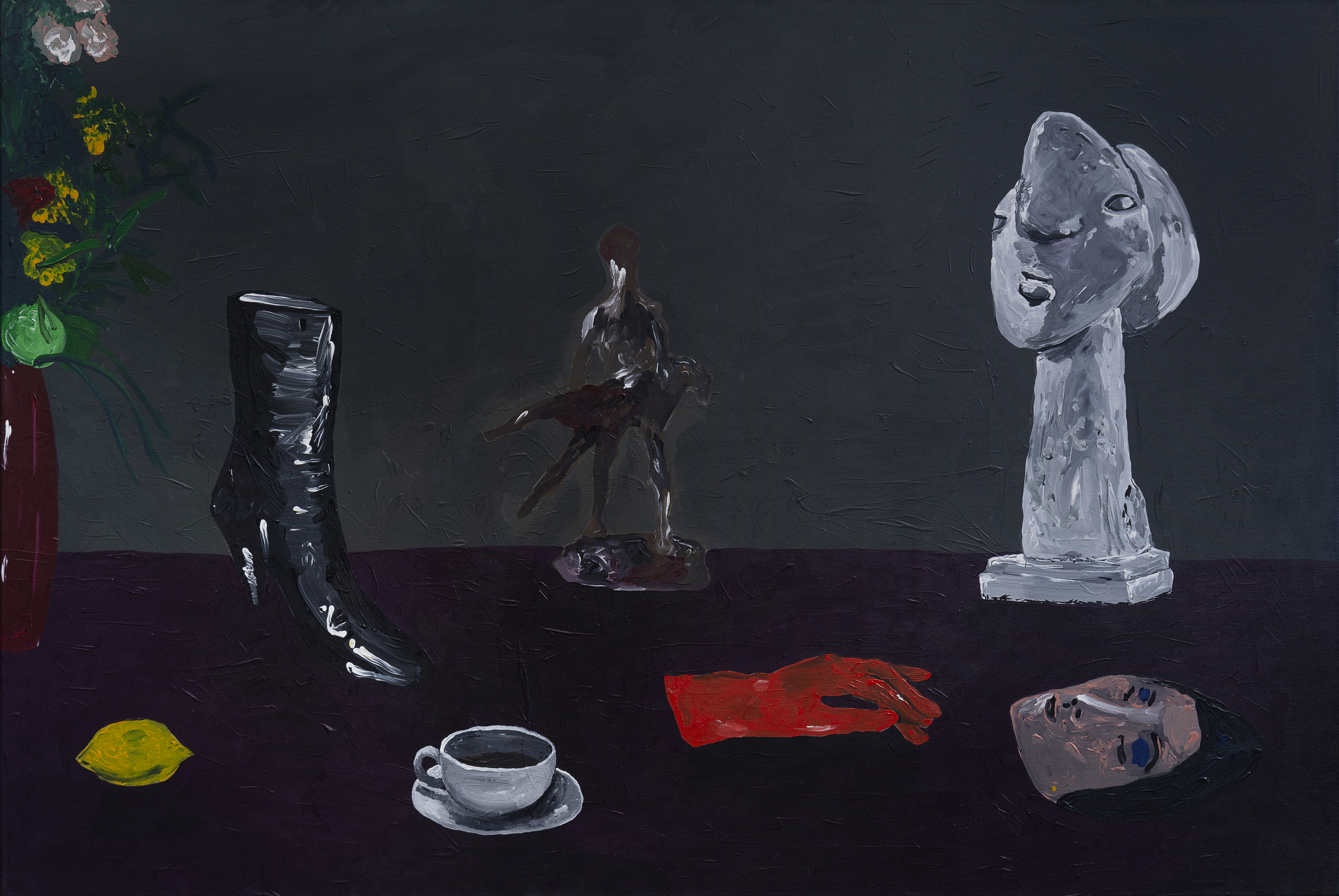|
|
EL ESCONDITE Scoring
Función Privada, Bruno Gruppalli
Composed by Ulises Conti, Bruno Gruppalli
In Función privada, Bruno Gruppalli (Buenos Aires, 1984) pushes painting towards an open code. His new project is also his first one within the discipline. The artist Gruppalli embodies is usually not only a painter, but a visual poet who uses all kinds of media to create a network of connections. He interweaves codes of communication, theatrical theory, literature, fashion, art history, 20th century subcultures and autobiographical references about altered states of perception. Among these tools, Gruppalli keeps the body as an object of study with ever- expanding and complex appearances; a link that triggers purely visual, mysterious or encrypted associations. The project arises from a series of large format paintings with generally solitary characters, seated at a café-concert table. The artist builds a first layer of connections within the painting: small objects rest on the tables in a carefree manner; random memorabilia of 20th century art and culture. Although this heritage is a haunting phantom, it does not sprout on the table to become the central spectacle. With this symbolic charge within the painting itself, the characters are spectators looking outward from the representation. In this way, a second layer of connections begins to thread between one work and the next. They all inhabit the same fictional space: a café concert where they seem to watch a show outside themselves. They force the exhibition room to become a theatrical scene, and the painting is not only an object that represents the real space, but a catalyst to transform that space into fiction. The private performance does not necessarily take place in a space that is for only a few, but the people gathered there share a code that becomes an atmosphere. On their side, the real spectators who enter the pictorial installation are also characters watching a show. And just like their avatars, they carry by their side an imaginary table laden with random specters of the history of art and culture of the last century.
|
||
